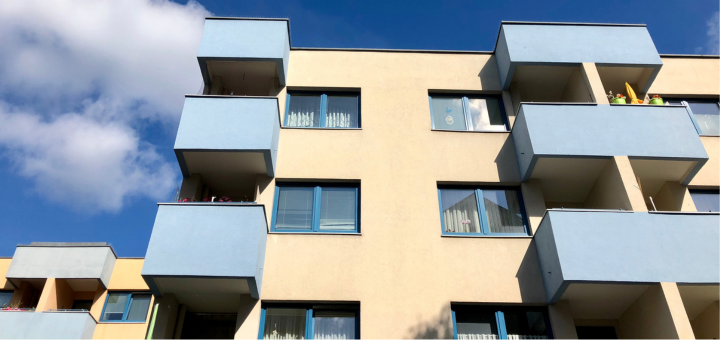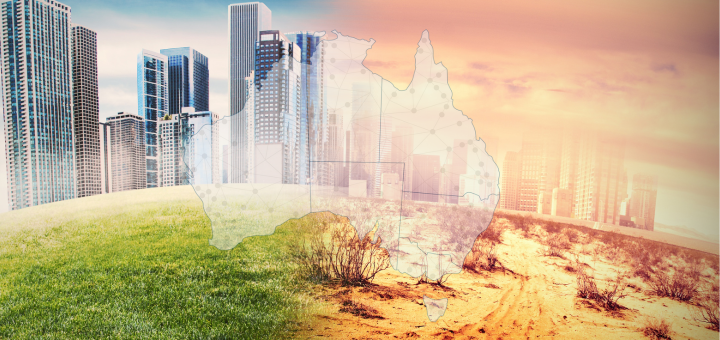The Living in Australia 2024: National Community Views Survey - Key Insights Report (DOWNLOAD HERE) draws on the views of the more than 5,000 people who participated in .id’s annual Living in Australia Community Views Survey collected across April and May 2024, and speaks to four themes we feel are critical to improving living standards across the Nation. The Living in Australia survey creates spatial benchmarking data for Organisations who subscribe to our Community Views service.
In order to thrive, we must first feel safe. Drawing on Maslow’s hierarchy of needs, safety forms the foundation upon which all other needs are built—enabling us to fully participate in life, contribute to our communities, and pursue our goals. But lately, this sense of security has been challenged in Australia.
In recent years, we’ve seen rising concerns about safety, especially in the context of gender-based violence, which has drawn attention from the public, media, and government. But what does the data reveal about how Australians feel when it comes to safety in their communities?
The value of 'feeling safe' and how safe we feel
According to the Living in Australia survey, “feeling safe” is consistently rated as one of the most important factors when determining what makes somewhere a good place to live. In fact, 63% of respondents placed it in their top five most valued attributes. While Australia fares better than many other countries when it comes to safety (Global Peace Index), there is still room for improvement. On average, Australians rated how safe they feel in their local area an average of 6.8 out of 10, leaving plenty of scope to enhance a sense of security in Australia’s neighbourhoods.


Safety perceptions by gender
The survey highlights a noticeable difference in the importance of safety between genders. For women, 67% listed feeling safe as a top priority, compared to 58% of men. Despite this, both men and women reported similar levels of safety in their local areas. The data suggests that while safety is more highly valued by women, experiences are relatively similar across genders.

How geography affects safety
Where you live also affects how safe you feel. Residents in Australia’s inner cities and smaller regional areas tend to report feeling the safest (7.2 and 7.1 out of 10 respectively). However, in larger regional towns (such as Bendigo, Geelong, Wollongong, etc), people are less likely to feel secure (5.8 out of 10). This sense of reduced safety in larger towns leads to law and order being seen as a key issue (44% identified this as a key issue compared to 26% of Australians), highlighting the need for local, state, and federal governments to address these concerns more effectively in those areas.

Safety perceptions can also differ at the suburb or precinct or neighbourhood level within a local government area. The map below left shows how resident perceptions of feeling safe play out spatially (darker pink indicates areas where residents feel more safe; in the lighter areas, less safe). The map to the right shows overall liveability in the same areas, where the precincts with lower perceptions of safety are also less liveable.

Socio-economic factors in safety
Safety perceptions also vary based on socio-economic factors. Residents living in lower socio-economic areas tend to feel less safe than those in more affluent areas (6.3 out of 10 compared to 7.2 for higher socio-economic areas). This correlation has been explored extensively in academic research and points to the role that local employment, education, and economic development play in fostering safer communities.

Next steps for local governments
By understanding how residents perceive safety at the neighbourhood level, councils and local governments can target specific areas for improvement. This includes looking at environmental design and community safety strategies. Data, especially when analysed spatially, can help local leaders develop more effective safety measures that respond to the unique needs of their communities.
In conclusion, feeling safe is not just a basic human right, but a critical factor in ensuring the wellbeing and quality of life of Australians. Given the high value we place on feeling safe, and improvement or decline in perceptions of safety strongly influence local area quality of life. By paying attention to the differences in safety perceptions across regions, genders, and socio-economic statuses, and the underlying circumstances that are influencing poorer perceptions of safety, we can start addressing these challenges and work towards safer, more prosperous communities - over the long-term.
If you’d like to learn more about how the Community Views Service helps a diverse and growing number of councils and other organisations credibly, comprehensively and efficiently represent and monitor their community’s views and needs in strategic planning and advocacy, our services page provides a simple overview, answers frequently asked questions and includes links to other helpful information.
Resources
Learn more about .id's Community Views Service, contact the team or book a free service overview.
Download the Living in Australia: 2024 National Liveability Survey report.
Explore our Living in Australia National Liveability survey results on the views.id platform HERE.
See how Councils are using Community Views insights and data to represent resident priorities in decision making: Ipswich City Council, Banyule City Council, Sunshine Coast Regional Council and City of Canning.















